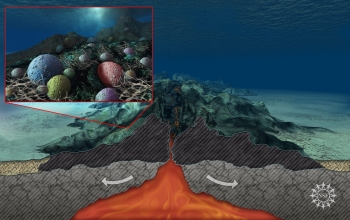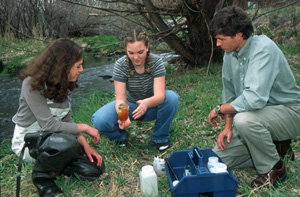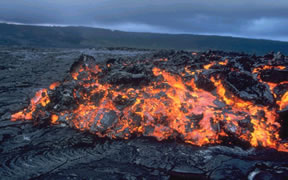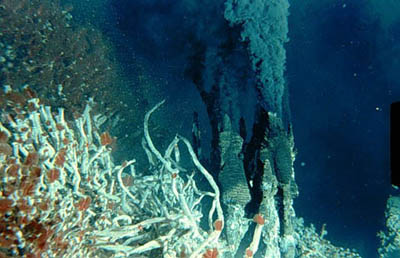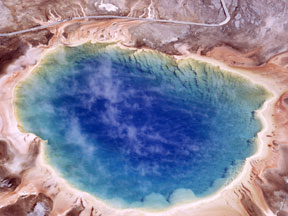Click on image for full size
Courtesy of Nicolle Rager-Fuller/National Science Foundation
Rock Eating Bacteria Found at the Bottom of the Sea
News story originally written on May 28, 2008
Has anyone ever told you that you shouldn’t eat things that you find on the floor? Well, the rules are different for bacteria. Scientists have found tons of bacteria at the bottom of the ocean that appear to be “feeding” off the seafloor.
The deep seafloor used to be thought of as an extreme environment where life could not survive. But this is not the case. Scientists have found that areas of the seafloor that look deserted are actually teeming with living things – very tiny living things - bacteria.
Scientists have known for some time that there are bacteria down there, but they didn’t know how much. New research has figured out how many bacteria are living on the ocean floor. And there’s a lot.
Scientists found three to four times more bacteria living on rocks of the seafloor than in the waters above. They also found that the bacteria were very diverse – with many different species.
Surprised by this diversity, the scientists tested other places on the seafloor. They found diverse bacteria at the other locations too. So it seems likely that tons of bacteria are living all over the seafloor.
For living things to survive and grow they need a way to get energy. The researchers wondered where in this dark cold environment the bacteria were finding the energy they needed.
"We scratched our heads about what was supporting this high level of growth," said scientist Katrina Edwards.
From their research, they knew that the ocean crust supports more bacteria than seawater above it. The scientists hypothesized that the bacteria might be getting the energy they need from the rocks.
In the lab, they calculated how many bacteria could survive from the energy provided by reactions with the basalt rocks of the ocean floor. Then, they compared this calculation to the actual number of bacteria that they found down there. The numbers were similar, suggesting that the bacteria are able to get their nutrition from the rocks.


